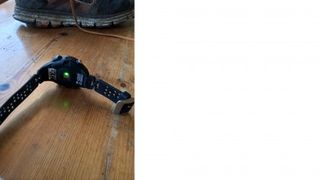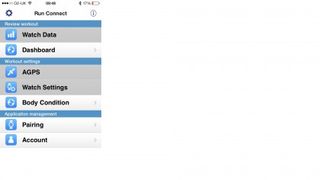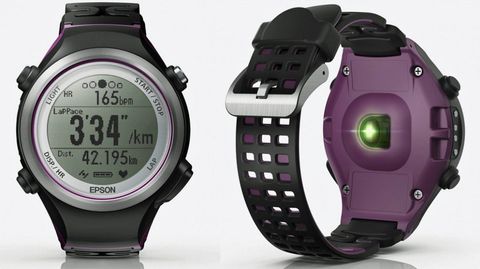TechRadar Verdict
Although a decent chunk of hardware with excellent GPS and clever features such as stride analysis and tracking, the Runsense is badly let down by its software. If Epson can improve that, expect to see its rating heading upwards over time…
Pros
- +
Accurate distance tracking and lots of data
- +
Good battery life (20 hours)
- +
Comfortable and rugged with a bright, clear screen
Cons
- -
A nightmare to set up from a smartphone
- -
Temperamental, uninspiring app
- -
Not slick enough to justify its price
Why you can trust TechRadar
We're playing with quite a few fitness bands at the moment - it's that time of year - and the word "playing" is important to note. Stylist, affordable health trackers are everywhere now, helping to gameify general fitness, and on the whole these discreet devices are doing a valiant job of motivating folks to get off the couch and do a little bit more stretching and moving.
But after a while, some of those folks will feel the burning desire to go a step further, and before long they've purchased some skintight lycra and started rising at 5am to go for a sprint up an icy hill. This is where the more dedicated, and more expensive, running tools like the Forerunner series from Garmin and the new Runsense from Epson come in to play.
Now, first off, Epson might make you think of printers – and jolly good ones, at that – but the Japanese company actually has a rich heritage in watches, with the Seiko Epson Corporation developing the world's first quartz watch in 1969, for example. Does that mean you should you part with £260 for its latest run-tracker offering? Let's see...

Setup
The Runsense that I tested was already 50 per cent charged when I plucked it out of the box. So I popped it in its charger - a ludicrously bulky plastic case like the sort you'd juice rechargeable batteries in, not the slimmest thing to slip in a kit bag - and left it for an hour or so to reach full capacity. It tells you exactly what percentage it's at as it charges, which is handy. In the meantime, I set about downloading the app and reading through the instructions and online set up.
Now, as mentioned, this isn't your general step-counting fitness band like the Garmin Vivosmart that I recently tested, it's designed for – and, we're told, partly designed by – dedicated runners. Therefore it's not a device you de-box, slap on and start enjoying instantly; it's a tool which requires a bit more configuration and getting used to.
It's a shame then, given the inherent complicated nature of these sorts of things, that the companion Run Connect app is quite confusing and not just a little bit frustrating. This is an app which requires PIN codes, registration emails, spinning wheels of death and, usually I found, a pop up saying something has failed.
Getting an email with the subject line: "Start using the service", your heart sinks a bit when you scan down to the main body of the email to read: "When using NR Uploader, you need to update Run Connect first. 1) PC App - Start Run Connect - Change Login ID and Password 2) Smartphone…" etc etc…
Speaking of hearts, it's telling that mine went from pumping out 60bmp to 87bmp during online setup, according to the device (but then if you look at this picture, it also recorded the resting heart rate of an unworn running shoe to be 85bpm, so I'm not sure what to think - more on this later.

Another confusing pop-up notification we got on the app was "Cannot detect the watch. Error code: 20-3302-0018". Right. In other words, although I wouldn't expect these things to be as simple to set up as setting up an everyday health tracker, I felt it could be a bit… ok, a lot more intuitive than it is.
From the Run Connect app, your data is uploaded to the Runsense View Portal online, so you can analyse your exercise data. Though it was not possible for me to set up and register for this via my iPhone because things as simple as putting in date of birth were rendered impossible by the calendar being half off the screen, with seemingly no way to resolve matters. The infrastructure simply isn't set up in a way that people use their tech in 2015.
Watch design
So, on to the actual watch itself. It's actually pretty neat; intuitive, if aesthetically a tad dry, and relatively easy to navigate on a run, with four pages of vital info to scroll through, providing data such as splits, heart rate, time, altitude, stride (more of which later) and only four well-spaced buttons (Light, Disp./HR, Lap and Start/Stop) to get the hang of.
The rubbery strap has loads of holes so you can make sure it fits really well and I had no issues with chafing or lack of comfort on long runs. It's water resistant and has a bright, easy-to-read, no nonsense screen. If it's dark, simply click the Light button and the screen will illuminate for around 10 seconds, which was good - a lot of more casual fitness trackers only give you about 2 seconds of illumination, which is part of how they make the battery life last for weeks instead of a day.
I only had a couple of instances, due to the position of the 'Start/Stop' button (protruding at the 1pm position when worn on the left wrist) hitting the back of my hands and pressing. Though this lets off a loud beep and wasn't really much of an issue.

On The Run
When tested on a very well-known route with a reliable app for comparison, the Runsense measured distance accurately enough for my purposes - only a 0.2 mile discrepancy over 10 miles - thanks to reliable GPS, which locked on within a minute, and a clever Smart Stride feature, which takes over when GPS is lost, having learnt your running style to keep track on distance and pace in the meantime.
As mentioned above, it measures heart rate without the need for a chest strap, but unlike on the generally reliable TomTom MultiSport Cardio, which uses the same basic tech, results did seem rather wild. Maybe I wasn't wearing it tight enough for bright green sensor on the back to cope, but the need for circulation will always get the nod over monitoring.
The battery life - billed as 20 hours on a full charge - still had ages to go after two hours of running, so you'd be fine using this over marathon distances. You can set phases for interval training, variable target pacing and laps to suit your regime - not very intuitively, so read those instructions - and there's also an indoor mode for gym running, sans GPS.

Analysis
The Runsense monitors many things. The Lap function records: Manual Lap, Auto Lap Distance, Auto Lap Time and Programmable Lap. You can record intervals for time, distance and heart rate zone, and set goals for distance and time. There are also alarms you can set for distance, pace and heart rate. What's more, you can measure cumulative ascent in altitude, descent, gradient, stride and calories burned. So it's not skimping on features.
This data is fed to the app via Bluetooth and then you can analyse all the data in graphs on the Runsense View Portal online from your desktop.
That's the theory anyway. Every time I tried to access this View Portal from my MacBook, I was somehow always just taken back to Epson's general Runsense product information page on their website in an endless circle of migraine. In fact, the Portal webpage doesn't seem to be compatible with Mac at all, which seems bizarre, firstly because Macs are pretty popular, and secondly because accessing the Portal from a phone's browser is impossible, as mentioned earlier.
So analysing my actual runs online, something you can do quite easily in great detail on any platform from a free app such as Endomondo, required the use of a PC. On this platform, the UI felt about five years out of date.
More damningly, while there was no shortage of data to analyse, the RunSense system made no effort to contextualise it, or offer coaching or tips of any kind. You need to be a self-starter with a lot of patience to get the most out of this watch.
Verdict
To put it in a sentence: nice watch, shame about the app.
We like
The Runsense SF-810V is a decent running watch for the price. It's accurate and fast when it comes to GPS lock, with good battery life, a clear screen and lots of features.
We dislike
The heart rate monitor doesn't instil the most confidence, being inaccurate when the strap's at a comfortable tightness, for me at any rate.
However, Epson's real Achilles' heel is its software. The drab app, tiresome setup and baffling web accessibility ause a seriously twitchy left eye and leave a bad taste in the mouth – something you already have when knackered after two hours of running.
Verdict
Now, to be fair, compared to much of its competition, £260 is relatively cheap. However, it's not "cheap" in a broader sense, and I'd like the software issues sorted out before shelling out that much for the Runsense. The question for a running watch is always, "Can it replace my smartphone?" Until the software backing it up improves the answer from me in this case is, "No, not really."

